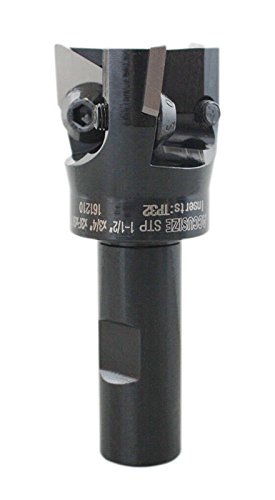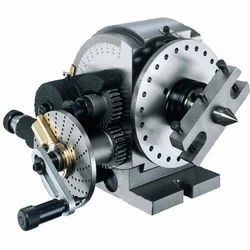- Joined
- Feb 18, 2016
- Messages
- 451
Anyone make any homemade Indexable End Mill cutters?
I'm looking at this one on Amazon for $40

This one seems pretty nice at a fair price. It's 1-1/2" with a 3/4" straight shank. I need either a straight shank like this or an MT3 taper.
I would also like to have a set of these in maybe 2", 3", 4" and 5". But I don't want to pay a ton of money for these. So I'm wondering if anyone has ever made their own homemade indexable end mills? I've seen a lot of videos on making homemade flycutters, but never saw one with multiple insert cutters like this.
I'm thinking the body shouldn't be too difficult to make. And then just buy the carbide inserts. In fact, if I made my own set I'd make them so they all use the same inserts so I can swap inserts between them if need be. A set of indexable end mills like I would like to have could get quite expensive. So the idea of making a homemade set is quite inviting. Especially since I would be just fine with a 3/4" straight shank with a flat milled on it. That part would be super easy. The only difficult part would be to cut the flats where the carbide inserts are installed. I would imagine those inserts would all need to be lined up pretty close tolerance to each other.
Other than this it looks like it would be a fairly easy project?
Can you share your experience with making these? Or point to YouTube videos where others have made them?
Or maybe another thread where this question was already asked and answered? I tried searching for such a thread but came up empty.
Thanks.
I'm looking at this one on Amazon for $40

This one seems pretty nice at a fair price. It's 1-1/2" with a 3/4" straight shank. I need either a straight shank like this or an MT3 taper.
I would also like to have a set of these in maybe 2", 3", 4" and 5". But I don't want to pay a ton of money for these. So I'm wondering if anyone has ever made their own homemade indexable end mills? I've seen a lot of videos on making homemade flycutters, but never saw one with multiple insert cutters like this.
I'm thinking the body shouldn't be too difficult to make. And then just buy the carbide inserts. In fact, if I made my own set I'd make them so they all use the same inserts so I can swap inserts between them if need be. A set of indexable end mills like I would like to have could get quite expensive. So the idea of making a homemade set is quite inviting. Especially since I would be just fine with a 3/4" straight shank with a flat milled on it. That part would be super easy. The only difficult part would be to cut the flats where the carbide inserts are installed. I would imagine those inserts would all need to be lined up pretty close tolerance to each other.
Other than this it looks like it would be a fairly easy project?
Can you share your experience with making these? Or point to YouTube videos where others have made them?
Or maybe another thread where this question was already asked and answered? I tried searching for such a thread but came up empty.
Thanks.



